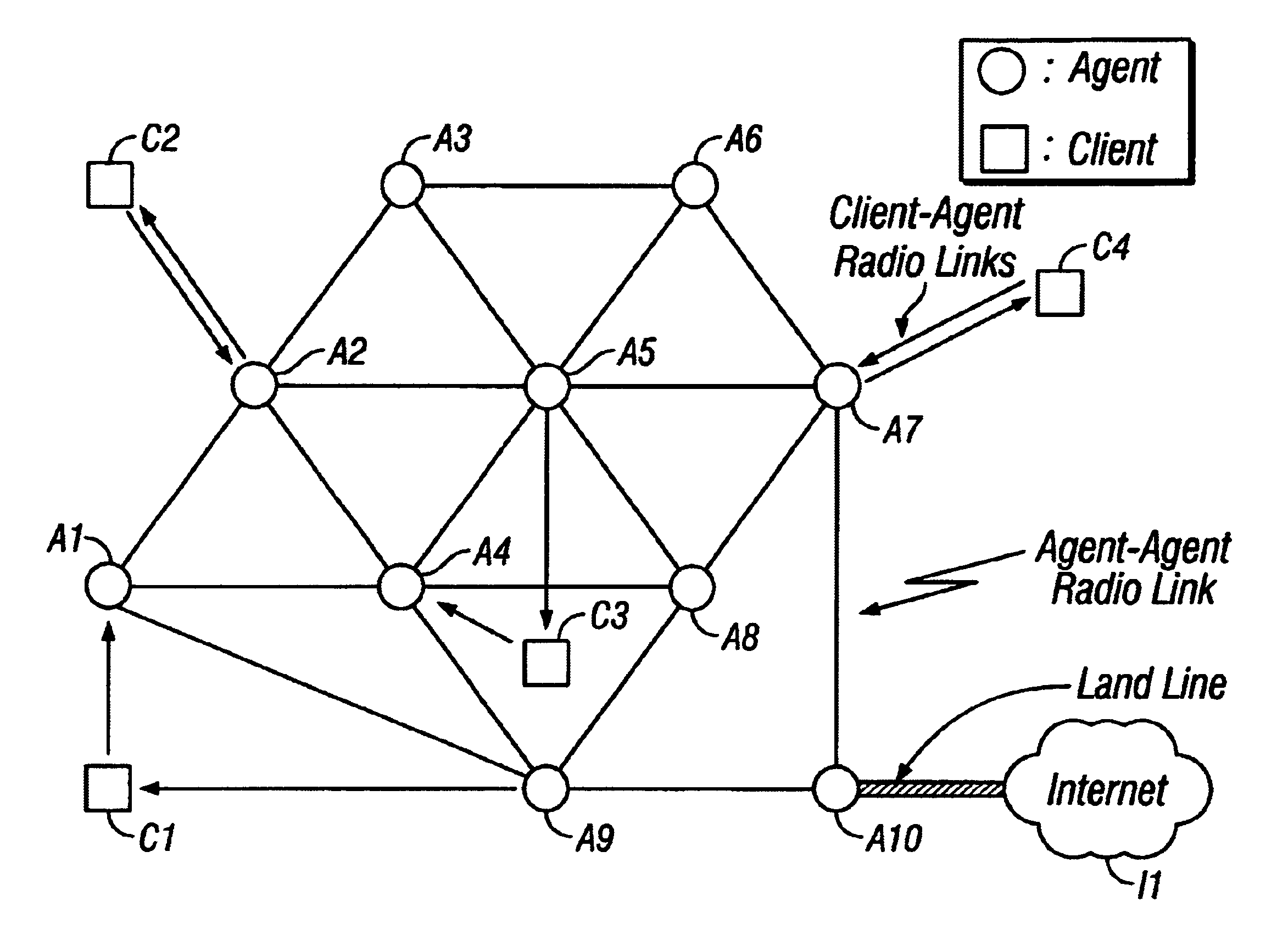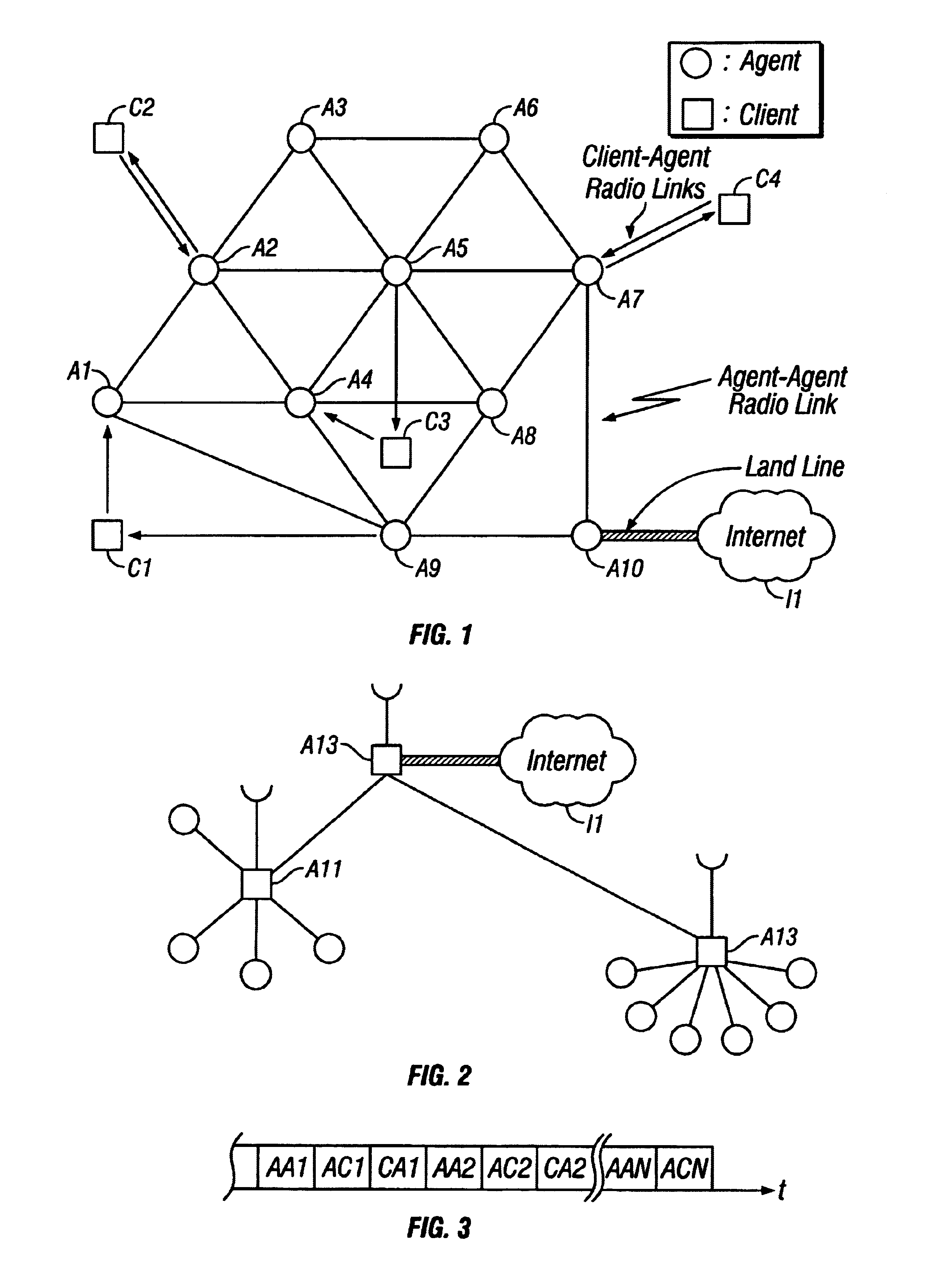Power- and bandwidth-adaptive in-home wireless communications system with power-grid-powered agents and battery-powered clients
a wireless communications system and agent technology, applied in the field of wireless communication, can solve the problems of high cost and impracticality of adding new wires, affecting the widespread adoption of home networking technologies, and users' inability to roam about with portable devices. users, and the problem of reasonable sophistication
- Summary
- Abstract
- Description
- Claims
- Application Information
AI Technical Summary
Benefits of technology
Problems solved by technology
Method used
Image
Examples
Embodiment Construction
Accordingly, the present invention may be considered to be embodied in each of (i) a local wireless communications system, (ii) a wireless communications system where power and / or bandwidth is allocated efficiently, (iii) a wireless communications system distributed among and between power-grid-powered intelligent "agents" communicatively servicing battery-powered dumb clients, and (iv) a two-tier wireless communications system.
2.1 A Local Wireless Communications System
Therefore, in one of its aspects the present invention may be considered to be embodied in a local wireless communications system. A "local" wireless communications system means a system for, most commonly, a home or a business, or even a farm or a mall or a school or a business park. However, a "local" wireless communications system is not a system for a neighborhood, nor for a community, nor for a city, nor for other, still larger, areas.
The system has number of clients, at least one of which is powered from a porta...
PUM
 Login to View More
Login to View More Abstract
Description
Claims
Application Information
 Login to View More
Login to View More - R&D
- Intellectual Property
- Life Sciences
- Materials
- Tech Scout
- Unparalleled Data Quality
- Higher Quality Content
- 60% Fewer Hallucinations
Browse by: Latest US Patents, China's latest patents, Technical Efficacy Thesaurus, Application Domain, Technology Topic, Popular Technical Reports.
© 2025 PatSnap. All rights reserved.Legal|Privacy policy|Modern Slavery Act Transparency Statement|Sitemap|About US| Contact US: help@patsnap.com


